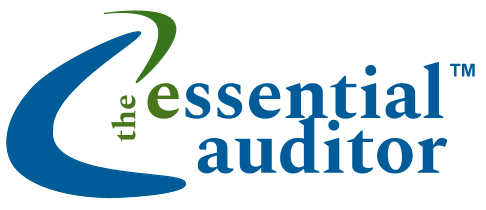Intro.4
How is TEA organized?
Here’s a brief overview of the six chapters.
Chapter 1 – It’s always about adding value
We start off by making the case that you need to focus on adding value. Period.
Creating great workpapers, fulfilling CPE requirements or preparing risk assessments are skills that define you as an internal auditor. But they don’t add value to anyone outside the internal audit department. And it’s these other people who decide your long-term success.
Major ideas in Chapter 1
- What it means to add value.
- It’s a person-to-person activity.
- Generic brands don’t add much value.
- Adding value is the starting point for everything else.
- There’s an implicit give-and-take of adding value.
Chapter 2 – Internal audit is a great starting point.
In this chapter, we convince you that being an internal auditor is a great foundation for adding value to others.
Whether you want to be an internal auditor for your career (or not), it provides a jump start with some built-in advantages that every internal auditor can take advantage of.
Major ideas in Chapter 2
- Internal auditors have access.
- Internal auditors have a unique breadth of perspective.
- Internal auditors have day-to-day flexibility.
- Internal auditors have a built-in value proposition.
Chapter 3 – They need you. They may not know it yet.
In this chapter, we talk about brands, in general.
Companies have brands. And people have brands. A brand solidifies the idea about who you are and how you can make life easier for others.
Major ideas in Chapter 3
- Everyone has a personal brand.
- Brands are about focused value.
- Brands can carefully evolve over time.
- Your brand reflects your trajectory.
Chapter 4 – You (YOU!)are more than just an auditor
In this chapter, we get into the specifics about how positioning is the starting point for building your unique brand.
Branding is about presenting the true you to the world. And positioning is about focusing on the specific things that interest you and make you uniquely valuable.
Major ideas in Chapter 4
- You build your brand positioning around what interests you.
- Your positioning is your anchor.
- You can use the 4-quadrant technique to test your positioning.
Chapter 5 – Your brand announces who you are.
Once you decide on your positioning, you need to convey it in a clear and unambiguous way.
The work you put into clarifying and communicating your brand will assure that others see and remember the true you. So, later, when they have a particular type of opportunity, or problem, they’ll remember that you are the best person to help them in a meaningful and valuable way.
Major ideas in Chapter 5
- Your brand helps others remember the important things about you.
- Your positioning is the foundation that you want them to remember.
- Touch points are where you communicate your brand.
- You need to carefully consider your brand artifacts.
- You can share your brand with others in a variety of ways.
Chapter 6 – Over the long term, consistency is what matters.
Living your brand is what gives it value.
It might take decades to build a brand. But it can be painfully damaged in an instant. These are the things to consider when maintaining, growing, and evolving your brand.
Major ideas in Chapter 6
- Your actions must always support your brand.
- When you make a mistake, handle it. Transparently.
- Brands are about focus. But that focus can expand or evolve over time.
- It’s always about who you serve. And how you help.
Appendix A – SPCS is our differentiator
Clever, trendy management fads are not your friend.
Major ideas in Appendix A
The best solutions and the best strategies are:
- Simple,
- Practical,
- Complete, and
- Sustainabale

